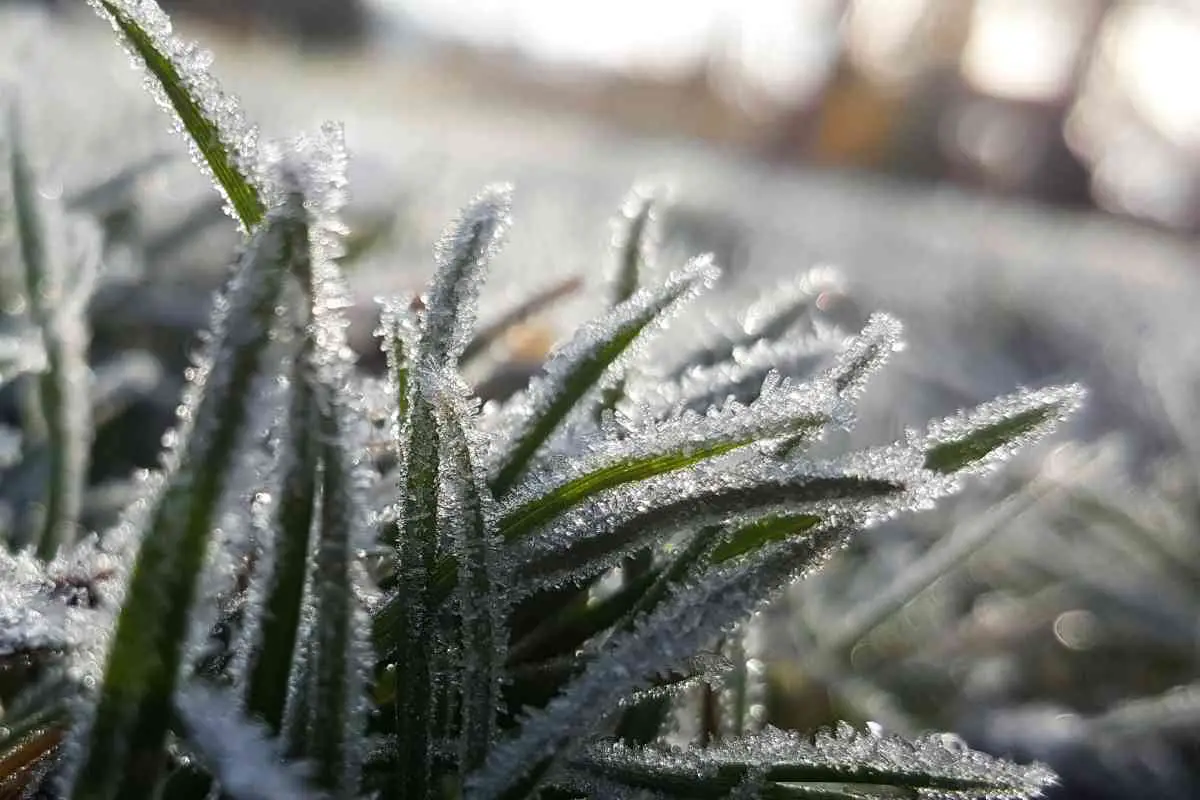Grass is generally classified as either being cool or warm season.
Cool-season grasses adapt well to cold seasons and will survive winter in most cases.
On the other hand, warm-season grasses thrive in the summer and spring months and often become dormant in the winter.
If you take care of your lawn, most grass varieties do not die in the winter.
However, under harsh winter conditions, the grass turns brown and enters a dormant state. Once the temperatures start rising in spring, the grass resumes its growth.
Does Grass Die In Winter
When the temperatures dip below 40 degrees F, the grass does not grow.
It becomes dormant, and you will not need to mow during the winter.
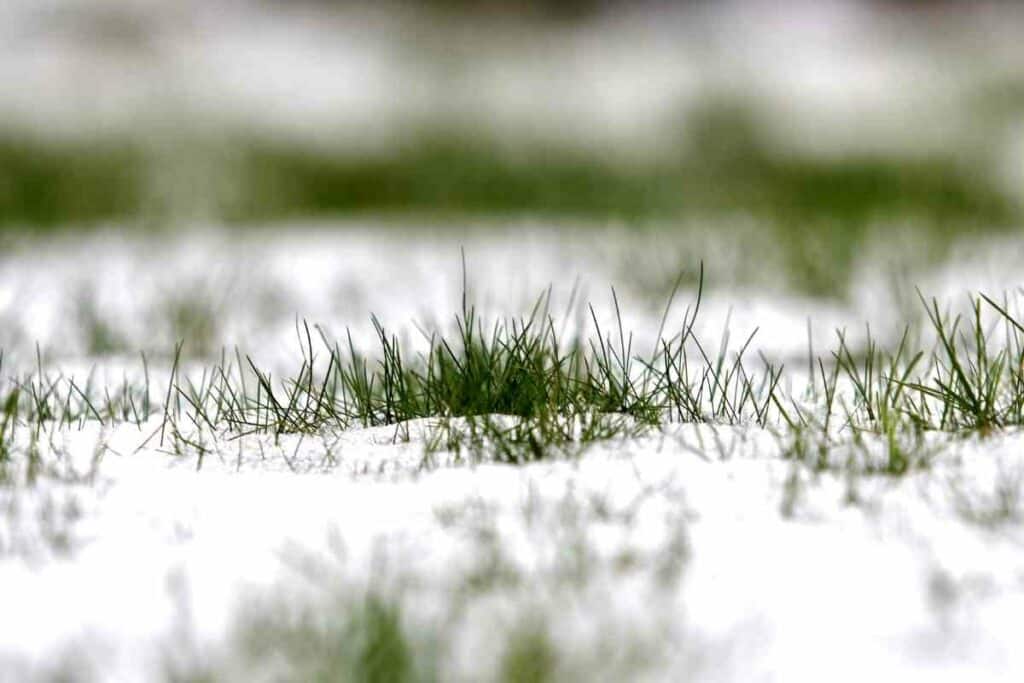
If you live in a region that hardly experiences frost, for instance, in the state of Florida, your lawn will still go into some dormancy.
The grass may grow slowly and will not look as beautiful as it does in spring or summer.
However, if the winter is freezing, the roots of the grass may get damaged. When this occurs, the entire grass affected will eventually die off.
You will notice some patches on your lawn even when spring comes. Therefore, you may need to plant more grass in those affected places to maintain a consistent lawn.
Homeowners need to ensure that the lawn is healthy before the winter hits. Mowing your lawn regularly is among the best practices for providing a good lawn.
Key Takeaway – Watering and fertilizing the grass appropriately prepares the grass for winter. If the grass is vibrant with a robust root system, it will survive the cold nights of winter.
How Winter Affects Different Grass Varieties
Cool-season Grass
Cool-season grass varieties grow well in winter and fall.
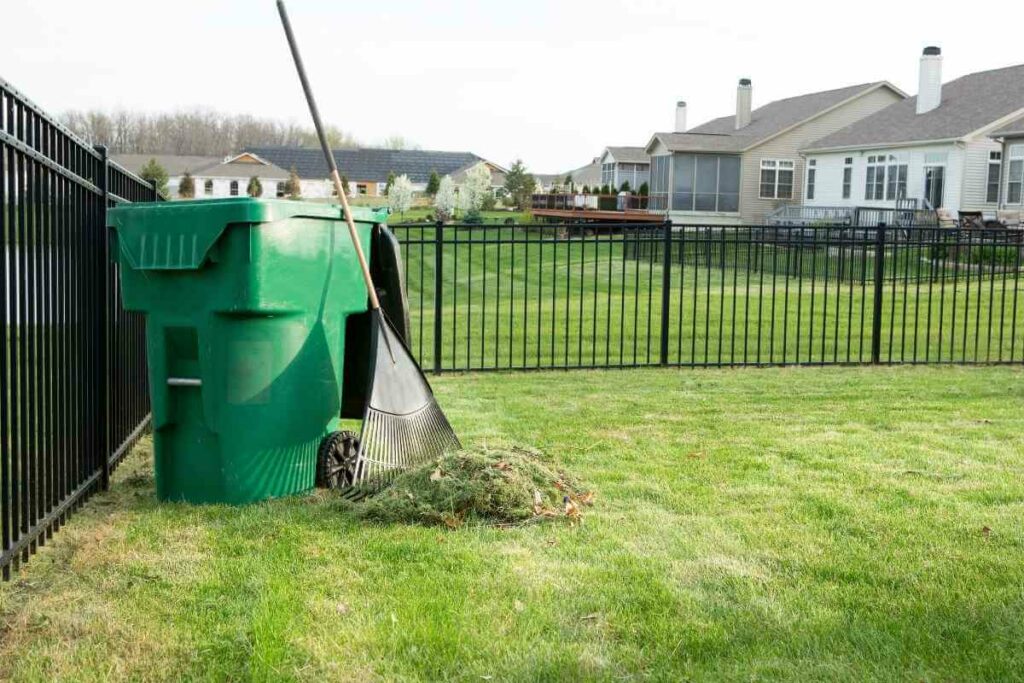
Also, these species do well in early spring and remain green under cold weather conditions. However, these varieties may become dormant when there is intense humidity and heat.
Cold-season varieties such as tall fescue, red fescue, ryegrass, and Kentucky bluegrass often become dormant in summer and thrive in cold weather.
Therefore, cool-season types will survive freezing temperatures.
However, you should avoid stepping on the lawn since the stem of the grass break easily in frosty conditions and may affect the roots.
Warm-season Grass
Conversely, warm-season grass varieties are affected more by cold winter weather.
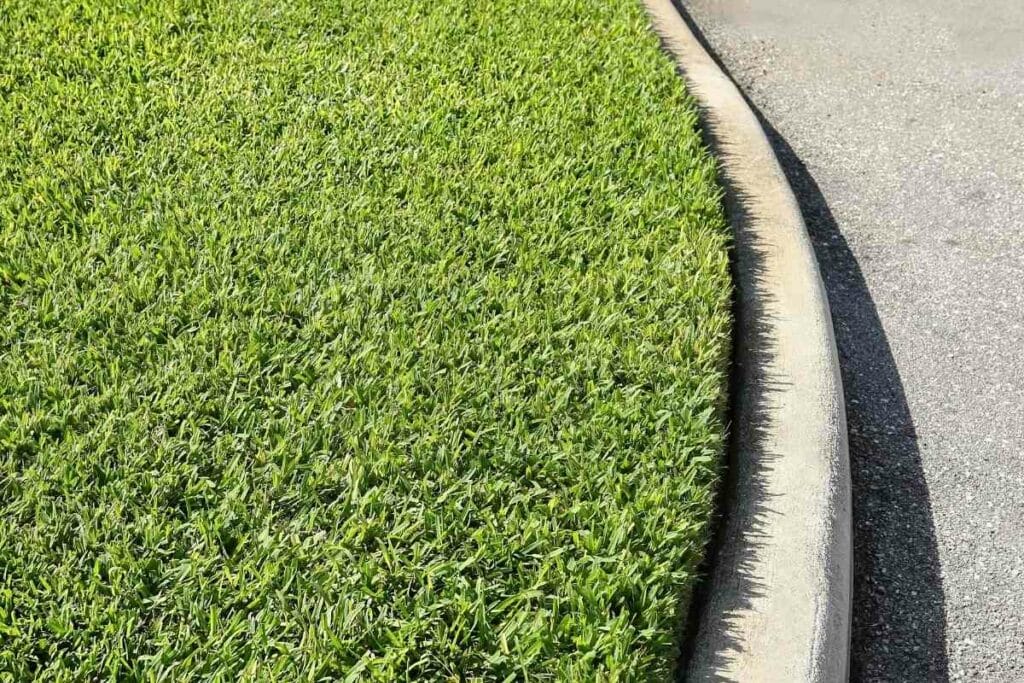
These species often turn brown and hardly grow in the winter period.
These varieties include:
- Zoysia
- centipede grass
- carpet grass
- Bermuda
- Bahia
- St Augustine
- and buffalo grass
At most times of the year, warm-season grasses remain healthy as long as the temperatures do not dip below 40 degrees F.
Do not be concerned when your lawn turns brown and your grass stops growing. The roots are still alive, and the grass will grow back when spring comes.
However, if you notice that your lawn has patches when spring arrives, it probably means that the roots failed to survive the winter.
Therefore, it is crucial to understand the different grass varieties and the temperature range in which they can survive.
Selecting an appropriate grass species will ensure your lawn remains healthy throughout the year.
Is My Brown Grass Dead
During the winter, your lawn may turn from a pleasant green to brown.
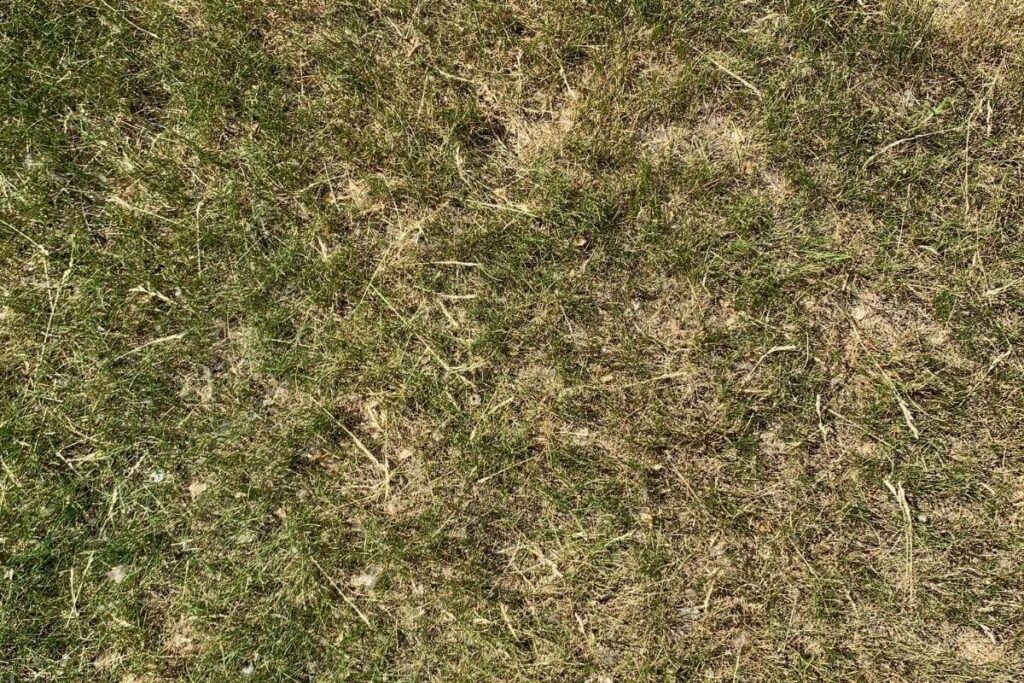
It may also look dry and dead. However, just because your yard turns brown does not mean the grass is dead.
In Most Cases – Your lawn has warm-season grass, which becomes dormant during winter. The grass will revive to its green color when the surroundings become warmer during spring.
However, some of the grass roots may die off after a harsh winter, and your yard may not look as nice due to the patches.
In this case, you can try over-seeding during the spring.
Some homeowners mix cool and warm season grass varieties in their yards to ensure a green lawn throughout the year.
However, it is best to plant a species suitable for your climate and location.
Which Varieties Should You Select For Winter Seeding
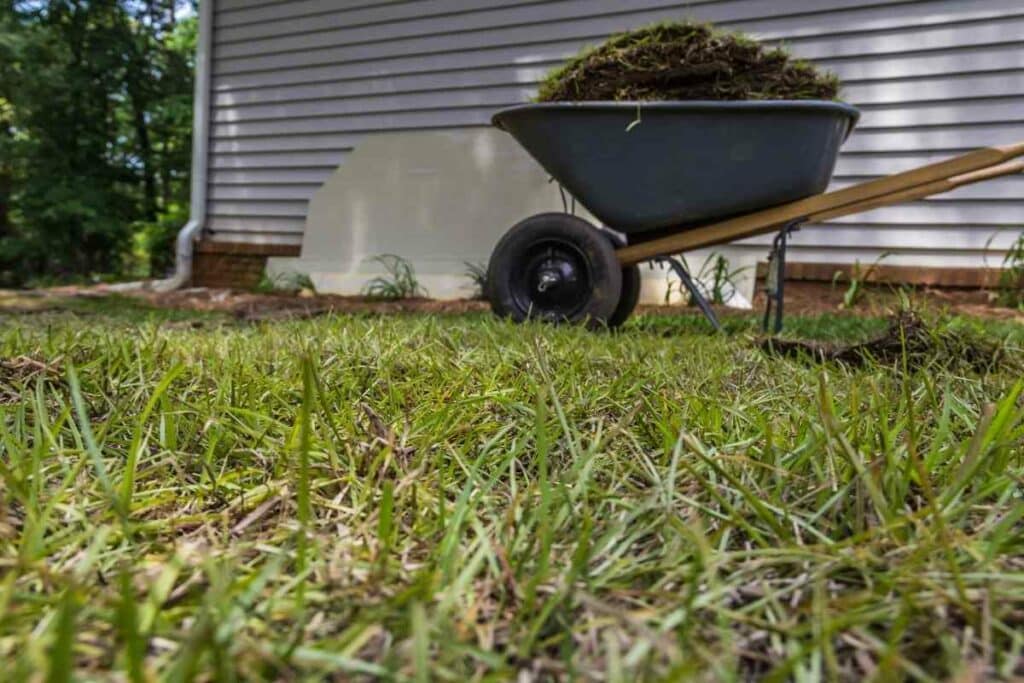
When choosing a grass species to plant on your lawn, consider the rainfall, soil composition, sunlight, humidity, and temperature.
Therefore, consult your local extension office or an expert for the best advice based on your locale.
In General – If you live in the Northern parts of the country, grow cool-season varieties that will be able to survive the brutal winter conditions.
Fine and tall fescue, as well as Kentucky bluegrass, are perfect cool-season grasses that will be able to grow even when the temperature dip.
Winter Tips To Care For Your Lawn
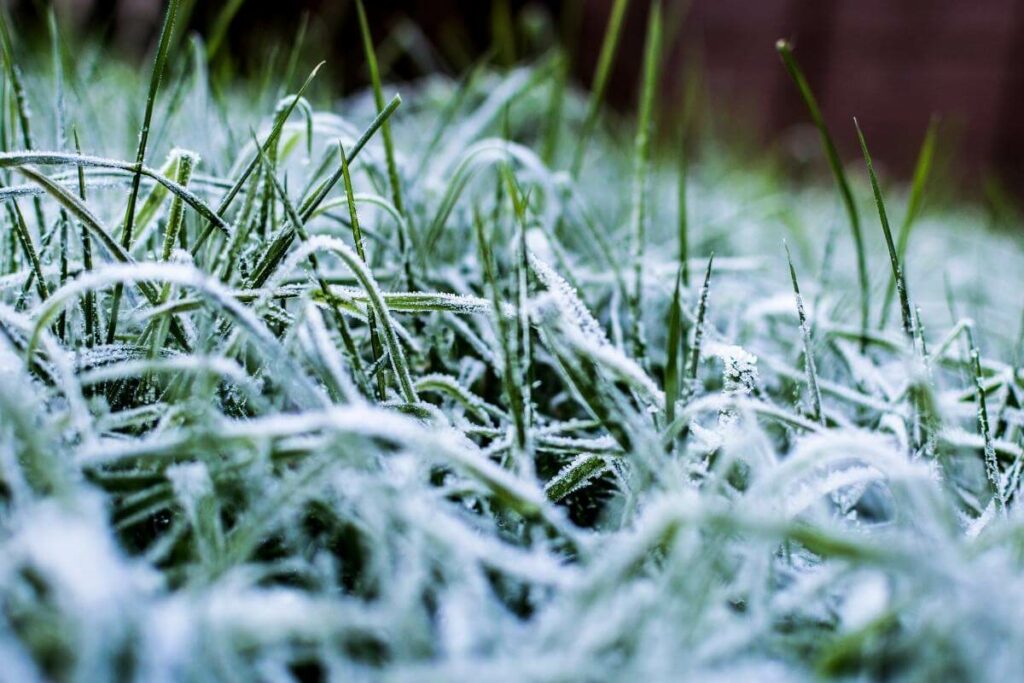
If you want a healthy lawn, even during the winter, there are practices that you should observe.
- Ensure your lawn has no weeds. Just before winter, remove all the weeds to prevent unnecessary completion for nutrients.
- Avoid walking on the grass during the winter. Frozen grass is delicate and will snap off if stepped on. Too much disturbance may damage the roots.
- Ensure to fertilize your lawn during fall. Use a slow-release fertilizer to ensure the grass has enough nutrients during the winter.
- Only water when necessary. The frost will affect your grass more if there is too much water.
- Also, ensure that the soil is adequately aerated before winter. Proper aeration assists the plant in absorbing water and nutrients effectively.
- Ensure the soil is well drained.
- If you live in a region that experience a lot of snow, ensure to trim your lawn to a small size. Too much snow on the grass encourages diseases that may destroy your lawn.
Final Thoughts
It is usual for your lawn to lose its green color during the winter.
However, that should not scare you; the grass is simply in a dormant state and will revive during spring. However, it is vital to prepare your lawn for the winter season.
Weeding, fertilizing, aerating, and watering are some practices that can help your grass remain healthy during winter.
If you choose the correct variety of grass, your lawn will take care of itself even during the cold weather.
